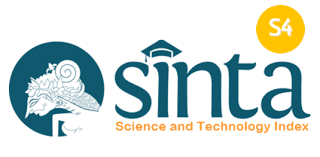SEPSIS RISK FACTORS IN ELDERLY PATIENTS AT ROYAL PRIMA MEDAN GENERAL HOSPITAL
Abstract
Abstract
Sepsis is a severe infectious disease accompanied by the discovery of a systemic response that can include hypothermia, hyperthermia, tachycardia, hyperventilation, and fatigue. Some studies suggest age is the most common risk factor for sepsis. The goal of the study was to determine the risk factors for sepsis in elderly patients associated based on age, gender, diagnosis, location of the infection, and length of treatment. The study used 100 samples of elderly patients aged > 60 years diagnosed with sepsis. Descriptive analysis techniques with cross-sectional designs are used to explain the characteristics of each research variable. The results of the study explained that the risk factors for sepsis most in elderly patients by age are > 70 years as many as 53 people (53.0%), female sex as many as 52 people (52.0%), endocrinological diagnoses as many as 24 people (23.5%), the location of lung infections as many as 20 people (19.6%), the length of treatment 3 to 7 days as many as 45 people (45%). Based on the results of the study showed that the elderly are an age that is susceptible to sepsis because the immune system and organ function will decrease with age. Endocrine diseases, such as diabetes mellitus, and infections of the lungs are the biggest risk factors for sepsis in the elderly.
Keywords
Full Text:
PDFReferences
Setiati S. Ilmu Penyakit Dalam. 6th ed. Jakarta Pusat; 2015.
Bastian L. Sepsis. Univ Sumatera Utara [Internet]. 2019; Available from: http://repositori.usu.ac.id/bitstream/handle/123456789/11564/Fulltext.pdf?sequence=1&isAllowed=y.pdf%0A%0A
Starr M SH. Sepsis In Old Ages: Review Of Human And Animal Studies. 2014; Available from: www.ncbi.nlm. nih.gov/pmc/articles/PMC3966671/?repo rt=classic%0A%0A
Wardani IS. Tatalaksana Sepsis Berat pada Pasien Lanjut Usia. Fak Kedokt Mataram. 2017;
H S. Profil Penderita Sepsis. Available from: http://webcache.googleusercontent.com/search?q=cache:60ThHMIFOWAJ:repositori.usu.ac.id/bitstream/handle/123456789/4711/140100006.pdf%3Fsequence%3D1%26isAllowed%3Dy+&cd=6
Fenty DMV. Hubungan Procalsitonin dan Gambaran Morfologi Leukosit Pada Infeksi Bakterial. J Farm Sains dan Komunitas. 2014;11(2):81-5.
Bardani, F. R., Andriani, Y., & Rahmadevi R. Penggunaan Antibiotik Restriksi pada Pasien Sepsis di Ruang ICU RSUD H. Abdul Manap Kota Jambi Periode 2017-2019. J Sains Dan Kesehat. 2021;3(2):227-32.
Christopher W Seymour MRR. Septic shock Advances in Diagnosis and Treatment. Jama. 2015;
Nicholas S, Ward, Mitchell M L. Sepsis: Definitions, Pathophysiology and the Challenge of Bedside Management. Humana Press. 2017;
Ibnu Arief Dafitri, Oea Khairsyaf, Irvan Medison YSS. Korelasi qSOFA dan NLR Terhadap Kadar Prokalsitonin Untuk Memprediksi Luaran Pasien Sepsis Pneumonia di RSUP dr. M. Djamil Padang. J Respirologi Indones. 2020;40(3):173.
Purwanto D. Mekanisme Kompleks Sepsis dan Syok Septik. 2018; Available from: https://www.google.com/url?sa=t&source=web&rct=j&url=http://ejournal.unsrat.ac.id/index.php/biomedik/article/download/21979/21680&ved=2ahUKEwi_wNzFnIjvAhWFIbcAHaITCVMQFjAFegQICRAC&usg=AOvVaw0VzvEfckKhhP1VGXKXdZFx
DOI: https://doi.org/10.35971/jjhsr.v4i3.12488
Refbacks
- There are currently no refbacks.

This work is licensed under a Creative Commons Attribution-ShareAlike 4.0 International License.
Jambura Journal of Health Sciences and Research is licensed under a Creative Commons Attribution-ShareAlike 4.0 International License
</p



_.png)




_edit.png)




